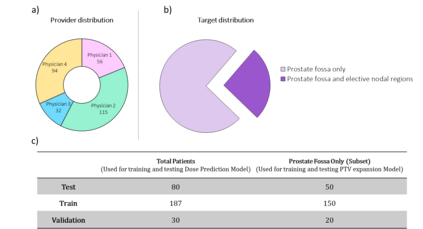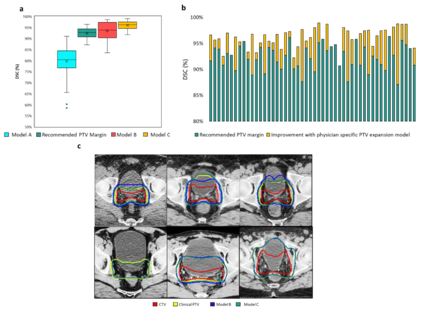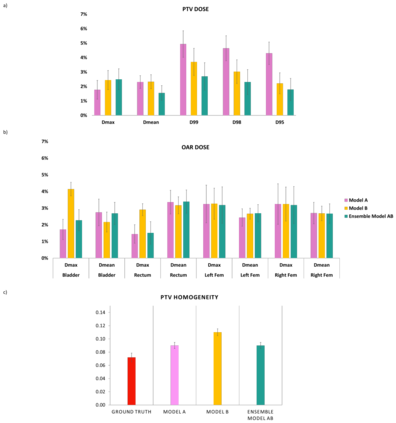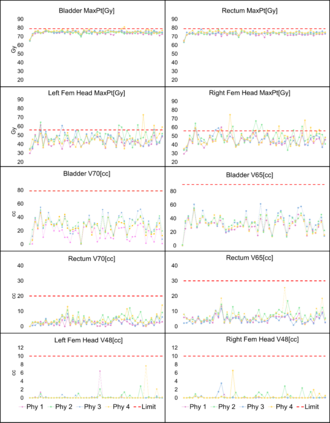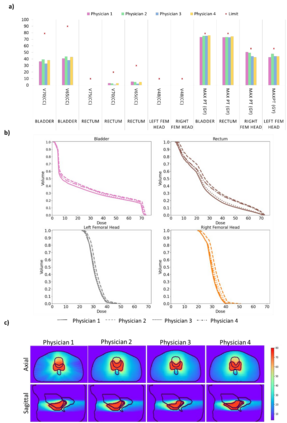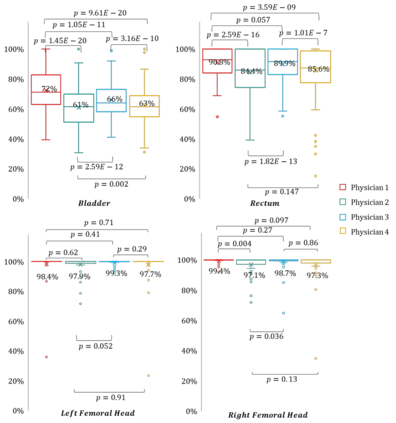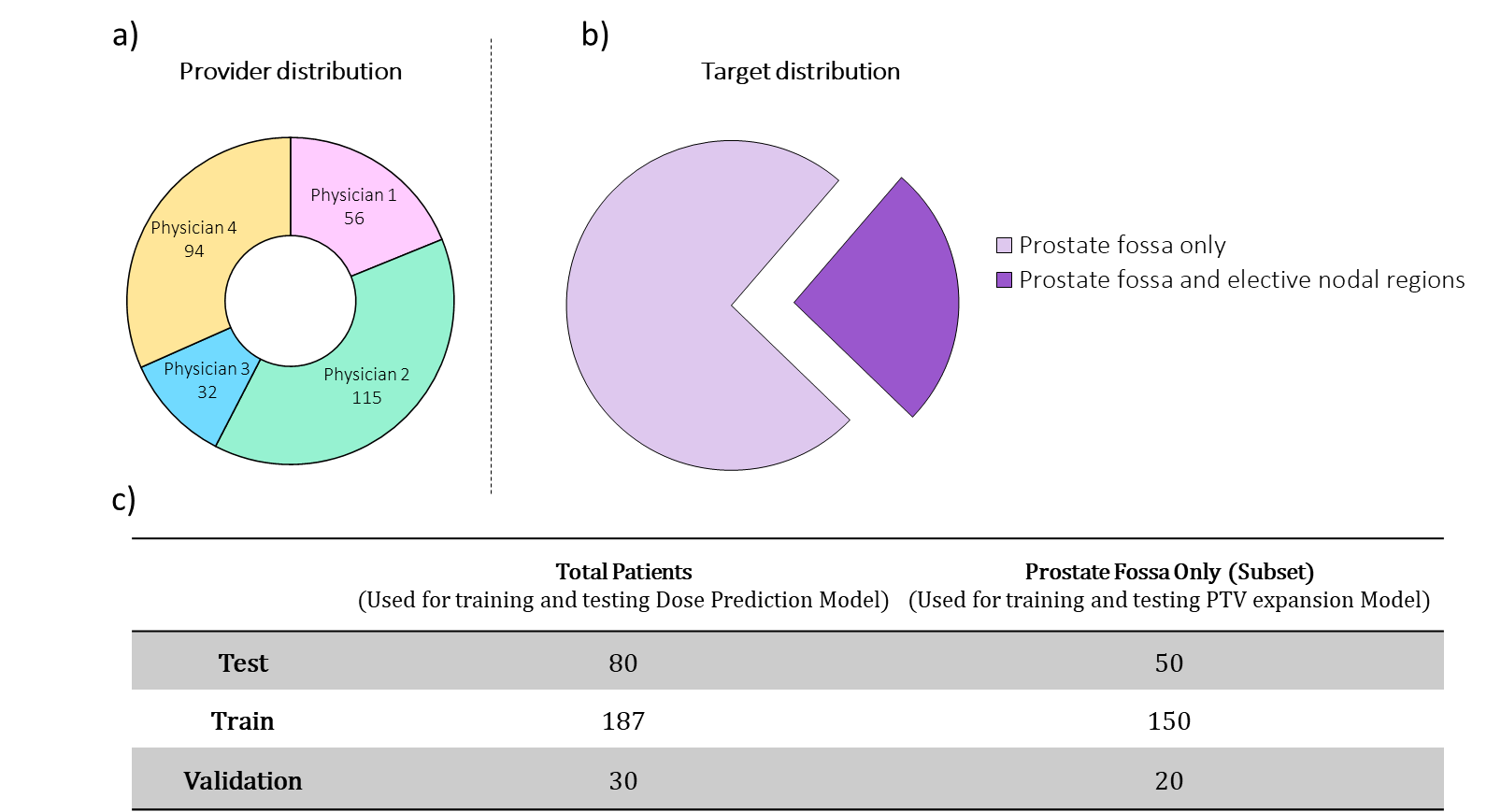Inter-observer variation is a significant problem in clinical target volume(CTV) segmentation in postoperative settings, where there is no gross tumor present. In this scenario, the CTV is not an anatomically established structure, but one determined by the physician based on the clinical guideline used, the preferred tradeoff between tumor control and toxicity, their experience and training background, and other factors. This results in high inter-observer variability between physicians. This variability has been considered an issue, but the absence of multiple physician CTV contours for each patient and the significant amount of time required for dose planning have made it impractical to study its dosimetric consequences. In this study, we analyze the impact that variations in physician style have on dose to organs-at-risk(OAR) by simulating the clinical workflow via deep learning. For a given patient previously treated by one physician, we use deep learning-based tools to simulate how other physicians would contour the CTV and how the corresponding dose distributions would look for this patient. To simulate multiple physician styles, we use a previously developed in-house CTV segmentation model that can produce physician style-aware segmentations. The corresponding dose distribution is predicted using another in-house deep learning tool, which, can predict dose within 3% of the prescription dose, on average, on the test data. For every test patient, four different physician style CTVs are considered, and four different dose distributions are analyzed. OAR dose metrics are compared, showing that even though physician style variations result in organs getting different doses, all the important dose metrics except Maximum Dose point are within the clinically acceptable limit.
翻译:观察者间差异是手术后环境中临床目标量(CTV)分解的一个严重问题,因为手术后环境没有严重的肿瘤。在这个假设中,CTV不是一个非解剖固定的结构,而是由医生根据使用的临床指导、肿瘤控制和毒性的偏好权衡、他们的经验和培训背景以及其他因素确定的。这导致医生之间在观察者间差异很大。这种差异被认为是一个问题,但是由于每个病人缺乏多个医生CTV的剂量和剂量规划所需的大量时间,因此无法研究其剂量测量方法。在这个假设中,CTV并不是一个由医生根据所使用的临床指导、肿瘤控制和毒性的偏好权衡、他们的经验和培训背景以及其他因素确定的结构。对于一个特定病人来说,我们使用深层次的学习工具来模拟其他医生如何在CTV上居高,以及相应的剂量分配方式,为了模拟多种医生间规划所需的大量时间,我们使用以前开发的CTV的分解方法来研究其剂量的理算方法。我们分析了医生间对器官-风险(OAR)的剂量变化对剂量的影响,我们通过深层次的学习来模拟C- dal Streal Strealalalalalalalalalal 分布可以显示另一个的测算结果。

